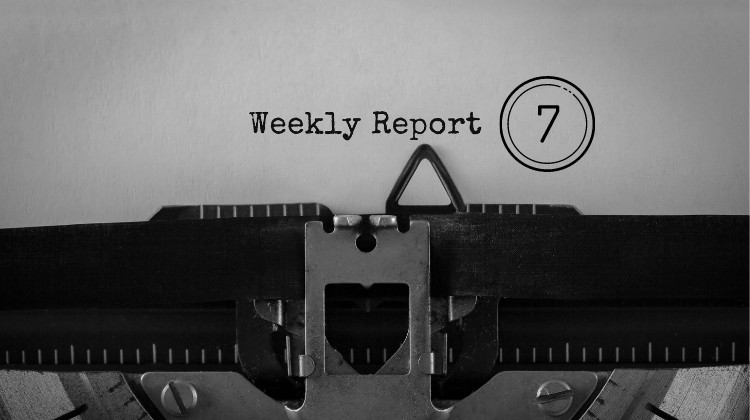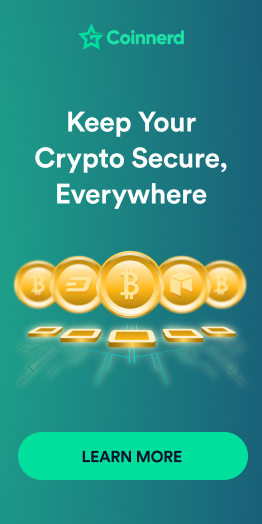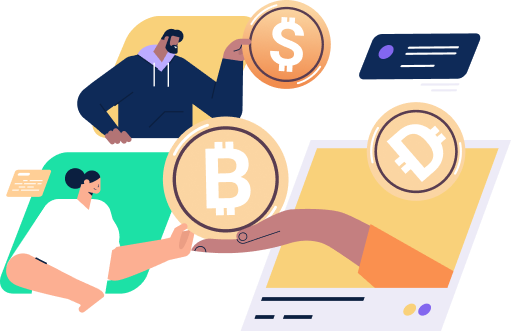A Beginner’s Guide to NFTs: What You Should Know
Non Fungible Tokens (NFTs) are assets that have taken the crypto industry by storm in just a year, some selling for millions of dollars per piece. To know what are NFTs, it is important to take a real-life example of traditional art.
If someone was selling you a painting and you wanted to buy it but you do not know its worth, you first call an expert to examine it and give a valuation. Then you can decide whether to buy it or not.
With NFTs, this does not apply. When an NFT is attached to a piece of digital work, it becomes a completely original version of work. Any artwork by itself can be called fake until verified. The NFT attachment gives digital art value because it’s identified on the blockchain as unique and original.
NFTs Headline Making Sales
The unique nature of NFTs is the main reason why some digital artists sell their pieces so expensive. For instance, a Beeple’s piece of digital NFT art sold for $69 million. The art belongs to Beeple because it’s already attached to a cryptographic token (NFT). The owner can sleep soundly, knowing that no one can claim ownership of Beeple because the work cannot be attributed to any other artist except him.
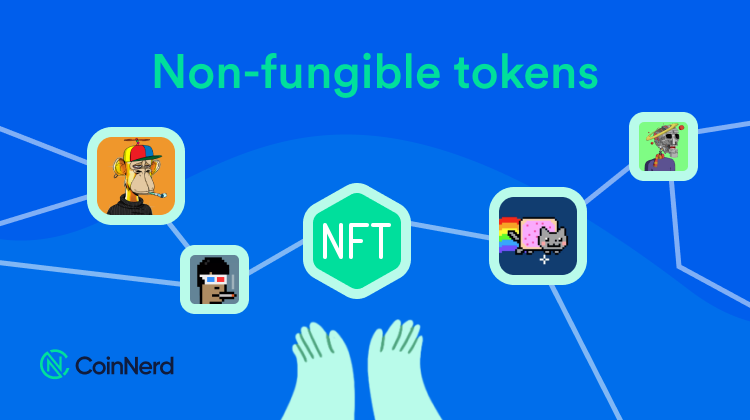
2021 saw the rise of the cryptographic token or the NFT. 2021 was quite frankly the year digital art in the blockchain ecosystem. It was the year when NFTs exploded into the world stage, and now NFTs have begun commanding a significant amount of wealth globally.
In January 2021, NFT sales at marketplaces around the world totaled $12 million, which skyrocketed two months later to about $ 200 million. This was a 16% surge in two months. Being young in the space of decentralized ecosystems, this NFT growth was so massive compared to major crypto assets like Bitcoin (BTC). It took over a decade for Bitcoin to reach the mark that it’s at today.
Now it’s easy to see why the NFTs have exploded onto the world stage. But What are NFTs, how are they made, and how do you buy or sell. Keep reading to learn more:
Non Fungible Tokens: What are NFTs and Their History?
The first NFTs on the Bitcoin blockchain were colored coins. The colored coins represented many assets including coupons, property, subscriptions, and digital collectibles. However, they had a limitation in their functionality and were far less effective than the current NFTs.
Therefore, they failed to spread worldwide. But they paved the way for the modern Non-fungible tokens, especially when you consider that the technology to build NFTs was at its infant stage at that time.
However, the potential in NFTs was still relevant, and people began seeing the value of owning assets on a blockchain. In 2014, peer-to-peer protocols were introduced on the Bitcoin blockchain. This is when the NFTs started to take shape, and games and digital assets became common on the blockchain. Many NFTs include digital artwork in images, videos, GIFs, and music.
Nonetheless, 2017 was the turnaround year for the NFT world when Ethereum began to take off in this space. Also, we saw CryptoPunks come onboard the Ethereum chain. Soon enough, NFTs minted on the Ethereum blockchain began taking shape. About 10000 characters became digital collectibles under CryptoPunks. After, these collectibles were followed by cryptokitties in the last quarter of 2017, bringing a rise in the popularity of owning digital assets. This immense possibility of NFTs attracted investors like samsungNEXT and google ventures who poured their money into the NFT ecosystem.
The Rise of NFT Marketplaces
In 2018, several NFT marketplaces were launched, including the most popular NFT marketplaces worldwide, The OpenSea and Rariable. Both of these began gaining ground in 2019. To a large extent, the establishment of these exchanges was influenced by the MetaMask wallet. The wallet gave users access to the NFT space the same way they access normal cryptocurrency.
In 2019, we also saw the current NFT standard of ERC-721 begin to blossom after its launch in 2018. ERC-721 has made it possible for platforms like Decentraland, Gods unchained, and other current games and applications to operate NFT-based play to earn games and metaverses. ERC-721 simply allows more than trading cards and collectibles because users can mint event tickets, buy digital land, unique clothes, music, and many other functions that give opportunity for creative assets.
Fungible and Non-Fungible – What’s the Difference?
Fungible and non-fungible tokens both run on the Ethereum network. They are designed to allow cross-platform functionalities like virtual reality museums and so on. With that said, let’s have a deeper understanding of what it means to be fungible and non-fungible.
Fungibility is a term used in finance when talking about exchangeable items. A good example is when five $1 bills are equal to a $5 bill, and four $5 bills are similar to $20.
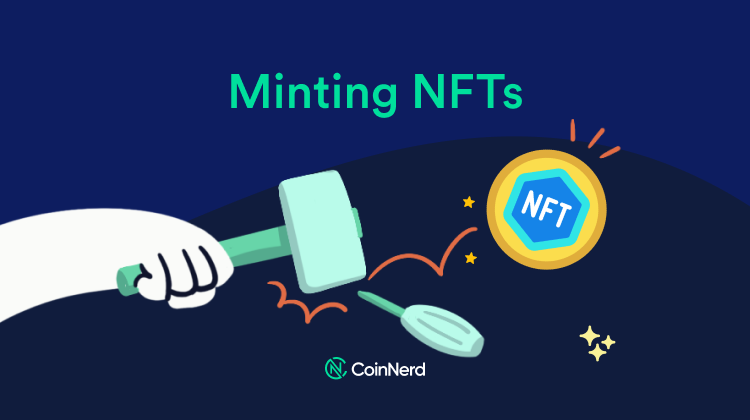
Same to cryptocurrencies. They are also fungible and perfectly exchangeable with another unit of cryptocurrency. In a short explanation, they can be divided. You can split a $20 bill into $1 accounts.
Non-fungible is the complete opposite of fungibles. A good example; your dog cannot be interchanged with a friend’s dog even though the same bread. Meaning it’s impossible to divide your dog or separate it into parts because its value would change fast. The value of the two dogs cannot be the same one dog might be worth $500 while the other might be worth $700.
Therefore, non-fungible tokens can be distinguished and are not changeable. You can only buy them at the value they have and as a whole. NFTs use cryptographic technology that ensures what you own is original and cannot be exchanged for any other thing.
This token attached to the artwork, collectible, or even a digital property is unique, and ownership is also actual. If you bought digital land, you could be sure that it is yours as long as it was sold on the blockchain.
All you need is ownership of the token. The record on the blockchain indicates you own that token or in this case the NFT. This token gives you ownership rights to the underlying asset associated with it.
The Subjective Value of NFTs
The subjective value of NFTs is the key driver of growth in this space. Think of it this way. If one thinks that the NFT is worth $2 million (just an example), there will always be a market for it. The person who mints the NFT is the one who attaches value to it.
On the other hand, the person who is buying the NFT decides what it is worth. It is after all a free market and people will pay what they think the art is worth. But the brand of the artist involved in minting the NFT will for a long time determine its worth.
To make it a lot easier for you to understand, in the real world, if you purchased a Mercedes Benz car, the car belongs to you forever, but the brand on the car still belongs to the Mercedes Benz company. This is what is referred to as subjective value.
The NFTs are very much secure compared to owning a physical asset. If you own a physical baseball card, it is prone to accidents like fire, thievery, and such. Still, the digital one is purely safe within the blockchain, and your ownership proof of that particular card is unique from another person holding the same card. This makes NFTs so unique.
The NFT Technology and How it Works
NFTs are built on blocks of complex algorithms. They are entirely different from the cryptocurrency tokens like Bitcoin, which are fungible. non-fungible tokens denote uniqueness and immutability as well as the ability to stay for years on the blockchain without being changed. But What is this NFT technology, and what makes it possible? Let’s have a look.
Non-fungible tokens are digital signatures written with a cryptographic algorithm that bring the scarcity aspect and uniqueness dimensions into digital art. When transactions are made, they are encrypted on the blockchain, and every single computer or node takes note of that. This means that the information is completely safe.
To understand better, here is an example. The internet uses the HTTP protocol. Therefore, any website developer does not need to build another protocol but simply uses HTTP. The same applies to the blockchain and ERC-721. Many NFTs are built on the Ethereum ERC- 721, making it easier to create a good standard for NFTs. However, the only problem with this is the network has flaws like high gas fees when creating or even selling the NFT.
It is still important to note that NFT technology is still being developed, and therefore creating decentralized applications and platforms to manage and create more NFTs is a relatively complex reality. In the future, there is a need for developers to come up with a unified protocol that will strengthen the NFT technology.
Through the current blockchain technology, non-fungible tokens and smart contracts still allow attributes like the owner’s identity metadata or file links. Blockchain’s promise is trustless security applied to the ownership of the asset. You only require a computer with a digital ledger to ensure that ownership.
NFTs are also created on other smart contract-enabled blockchains with NFT tools and support. Ethereum blockchain is the first and most widely used. However, blockchains like Solana, NEO, Tezos, EOS, TRON, and others support NFTs.
How to Mint or Create NFTs Artwork
In marketplaces like Mintable, Rarible, and OpenSea, you can mint your collections and sell them however you please. You will need to apply to see if you qualify to put a collection. You can put up any kind of art you want and sell in the open marketplEthereumen on uncurated marketplaces where celebrities like Mark Cuban have sold their NFTs for eye-popping prices.
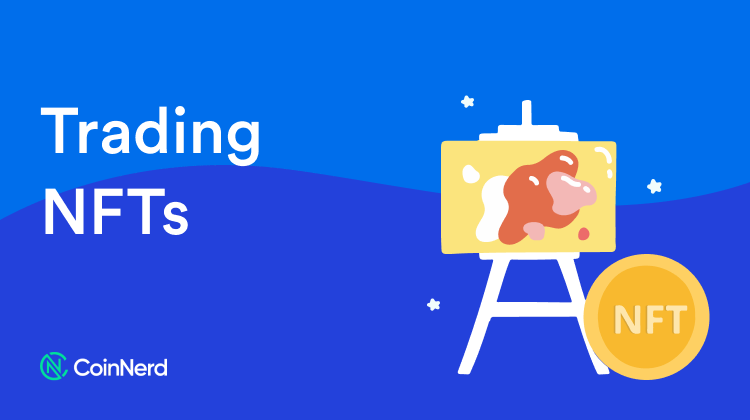
Nonetheless, being the first marketplace platform for NFTs, OpenSea is a significant place for creating NFT artworks. Towards the last quarter of 2020, OpenSea underwent changes that allow artists to create their own NFTs on the platform very fast.
Unlike before when you had to mint it from elsewhere and upload it on OpenSea, now you can create it there. There is also a feature on the platform that allows the artist to create video and audio NFTs, bringing in a variety in all forms of art media.
So how do you create NFTs? Well, this is a step-by-step process, and you could end up with one of the NFTs as your own. The steps include;
- Know The Blockchain You Are Using.
You need to watch out for gas fees (transactional fees). Because NFTs operate on the Ethereum blockchain, transactional fees must be incurred when creating or minting an NFT. You need to calculate how much you will incur before you start minting.
There are times of the week when the fee is relatively considerable, and these are the best times for you to mint your NFT. According to DEXTF, early weekend mornings are the best times to save on your transactional fees and pay less than weekday creators pay. Watch out on Asia hours because that’s when Defi users are so busy and therefore not the best time to save on your gas fee.
Using new blockchains will also save you fees because they are not as widely used as the Ethereum blockchain. Hence, they tend to have very few potential buyers for your work and fewer fees. Remember that OpenSea will also charge you fees once a purchase has been made.
- You Need a Wallet
A wallet is very important because this is where you will keep your minted NFT before uploading it to the marketplace. MetaMask wallet stands out as the best wallet to use for a beginner. MetaMask will help you mint NFTs on any Ethereum- based platform. However, leaving your earnings on MetaMask is not a recommendable idea, but you can use it to mint and sell your NFTs.
To download Metamask, you can click on the download now from MetaMask.io using your chrome or brave browser. Set a password, and a seed phrase will be generated. You will need to use this phrase if you forgot your password and want to recover your wallet.
Once the wallet is active, buy Ethereum on your exchange and transfer it to your MetaMask wallet. To mint NFT, you will need $250 worth of ETH, where gas fees are about $50. You may want to add more money if you intend to create a whole collection.
- Create an NFT or A collection.
On OpenSea, click my profile and connect your wallet with your OpenSea account. Click on Create your collection and choose an image of your choice, name and give it a description.
On the collection page, create items by clicking on add new items and following directions to post your new item in the collection. Once you are done, upload the image as your NFT and name it.
You can give your NFT properties. It will help the buyers understand what the NFT is comprised of. If you are minting collectibles with different characteristics, you need to use levels and stats. You can also determine the supply, the number of copies created or minted and so much more.
- Selling your NFT
OpenSea does not charge upfront for creating items. According to the platform, this is called lazy minting, where fees will be paid later when a buyer buys the NFT. You can set the prices as fixed or an auction to the highest bidder. But either way, the fees will be paid when the NFT is bought. OpenSea’s fee is 2.5% of the value.
The NFT Marketplace – All you need to Know
Because NFTs cannot be copied or altered, they are suitable for tracking property ownership, giving the rights to an image, or even a piece of digital land. So, what are NFTs marketplaces? In the above topics, we have touched bits and bits on marketplaces but let’s have an in-depth look at NFT marketplaces.
You have heard that people are buying digital cats, NBA moments, and even virtual artworks but have no clue where they are getting them from. The places where they buy these NFTs are known as NFT Marketplaces.
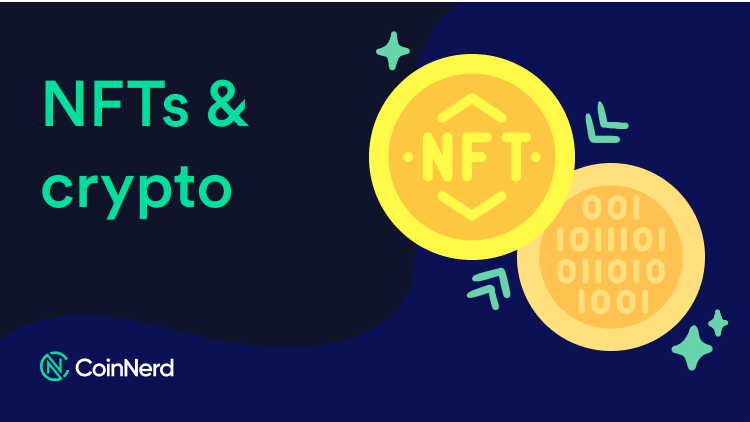
NFT marketplaces are platforms designed to store, display, and trade NFTs and, on specific platforms, mint them. For the most part, the listing and creation of NFTs on marketplace platforms always incur fees. For you to be able to buy NFTs on the marketplace, you will need the following:
- A crypto wallet. And in this case, MetaMask suits best for this task. But you can also use Trustwallet or the Coinbase wallet. They also work well with the marketplace.
- Some coins in your wallet. To accomplish this, you need to have an account with an exchange platform to buy your coins and transfer them to your wallet.
- Lastly, you need a marketplace user account where you intend to buy your NFTs. You can still use the same marketplace to sell your NFT if need be.
How NFT Marketplaces Work
NFTs marketplaces are meant to store, display, buy, sell, or trade the NFTs. This is what happens in the NFT marketplace;
- The user has to sign up with a particular NFT marketplace. The signups will differ from one NFT marketplace to another but slightly. However, the significant sign-up steps remain the same. These are creating an account and connecting to your wallet. Remember your wallet password because you will need it when connecting to your user account.
- The next step is buying the NFTs. The NFTs are bought directly on two options: fixed price or an auction. In other instances, buyers will make price submissions and try to negotiate for a price that suits them best.
- The selling of NFTs. The selling procedure is somewhat complex compared to buying the NFTs. Selling the NFT involves uploading your chosen NFTs onto the marketplace, fixing a price, or selling through an auction.
- Verification of the NFT on the platform. If the approval goes through, the NFT will be on the list for sale.
- Bidding. The buyer places a bid, and when the seller accepts the bid, the marketplace will help the transfer be successful.
- The minting of NFTs. This happens when the user wants to create an NFT. Make sure you fund the wallet with enough coins to help make the transactions successful. The minting process will be more straightforward once the wallet is in place and connected to the marketplace you are using. On almost all NFT marketplaces, there is a button at the top right corner named create. That will direct you to the area you are expected to mint your NFT.
The Most Popular NFT Marketplaces
There are pretty many NFT marketplaces globally that are art-oriented platforms. However, several are quite popular and known to be the leading NFT marketplaces. There are also niche NFT marketplaces that deal with particular kinds of NFTs like game items, collectibles, and virtual real estate. The most popular NFT marketplace currently available includes the following:
- OpenSea: This is the first and largest NFT marketplace. It is well established that you can find NFTs representing ownership of a combination of things, including artwork, sports collectibles, and others. It also allows virtual worlds and domain names on its platform.
- Rarible: This marketplace is owned by the community members who hold the RARI tokens. It emphasizes art particularly, but also other NFT items are allowed.
- SuperRare: This NFT marketplace purely emphasizes or focuses on digital arts. It also works with a selected handful of artists.
- Nifty Gateway: This NFT marketplace is large enough and accommodates artwork from renowned artists like beeple, Steve Aoki, and others.
- Foundation. It is also one of the best NFT marketplaces, with an all-time trading volume of about $48 million.
As for the niche NFT marketplaces, there are several, including;
- NBA Top Shot – Niche platform for the best NBA Moments
- Axie Infinity. Specializes on the Axie Infinity game.
- Sorare. Specializes on virtual cards representing football players
- Decentraland. Users buy and sell virtual land and in-game items
- Valuables. Users on this marketplace tokenize tweets and sell them as NFTs. An example is the first-ever Jack Dorsey tweet he sold for $2.9 million.
What NFTs Are Making Waves in the NFT Space?
A few NFTs have been making headlines in the NFT space globally, especially in 2021. Here are some of them:
CryptoPunks Collectibles
These date as far back as 2017 and were the first NFTs to be minted. There are about 10000 characters and were initially released for free. Currently, the highest-selling CryptoPunk is CryptoPunk7523 going for $532 million. CryptoPunks has made millionaires overnight, especially in the year 2021.
Bored Ape Yacht Club
This is also a series of NFT avatars like CryptoPunks but taking the shape of apes. There are also 10000 of them, generating a set of attributes. If you own a Bored Ape NFT, you are eligible for airdrops of Bored Ape Kennel Club and mutant Ape Yacht Club. The Bored Ape NFTs have generated over $1 billion in sales, top-selling at $3.4 million.
Axie Infinity
This is one of the biggest NFT video games with the most traded NFT collection. Over the years, it has amounted its trading volume to over $2.5 billion. The game is a play-to-earn system where traders have to trade their NFTs within the game to play and earn more.
What’s the Future of NFTs?
With new protocols emerging every day, NFTs will land new hosts. This is just the beginning. The NFT ecosystem is still at its infant stages and is a vibrant and robust market for many investors and artists.
Currently, the artists are already enjoying fortunes with their art. But it’s only now that NFTs have begun gaining widespread adoption. In 2022, we might see the new protocols flipping NFTs into hundreds of thousands of dollars. For this reason, NFTs are a recommendable investment to engage in.
* We hope this information will help you in your investment process, but this is not investment advice. Every investment carries risk, especially in this industry, so DYOR before making a decision.



